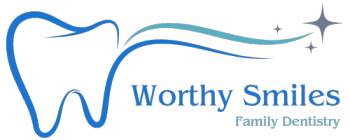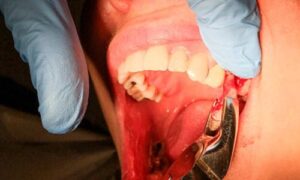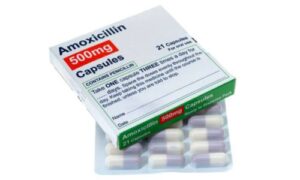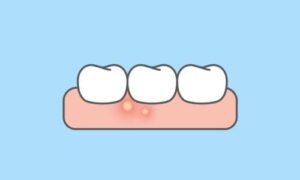Dental cupping of front teeth is a concern for aesthetic and oral health. It refers to the development of small indentations or cup-like depressions on the surface of the front teeth, particularly noticeable when smiling. Various factors, including acid erosion from acidic foods and beverages or aggressive tooth brushing, can cause this condition. Preventing dental cupping involves maintaining good oral hygiene practices and avoiding habits contributing to enamel erosion, such as consuming excessive amounts of sugary or acidic foods. This article delves into the world of cupping front teeth, explaining its causes, potential consequences, and, most importantly, how to prevent it from happening to you.
What is Dental Cupping Front Teeth?
Cupping front teeth, also known as tooth erosion, manifests as small, concave indentations on the enamel surface of the front teeth. These cupped areas can appear shallow initially, but if left untreated, they can deepen over time, exposing the dentin layer beneath the enamel. Dentin is softer and more sensitive than enamel, leading to increased discomfort and potential toothache.
According to the American Dental Association, around 91% of adults in the US experience some degree of enamel erosion.
Causes of Dental Cupping Front Teeth
Several factors can contribute to the development:
- Acidic Diet: Regularly consuming acidic foods and beverages, like citrus fruits, sodas, and sports drinks, can erode tooth enamel. The acid softens the enamel, making it more susceptible to wear and tear.
- Gastrointestinal Issues: Chronic acid reflux or frequent vomiting exposes teeth to stomach acid, accelerating enamel erosion and leading to cupping front teeth.
- Bruxism (Teeth Grinding): Involuntarily grinding or clenching teeth at night (bruxism) can wear down the enamel, particularly on the front teeth, where contact is most frequent.
- Improper Brushing Technique: Brushing too hard, especially with a hard-bristled toothbrush, can damage the enamel over time, contributing to cupping front teeth.
- Genetics: Some individuals may have a naturally thinner enamel layer, making them more prone to cupping front teeth.
Symptoms of Dental Cupping Front Teeth
The most prominent symptom of cupping front teeth is the visible indentations or cupped areas on the surface of the front teeth. Additionally, you might experience:
- Increased tooth sensitivity, especially to hot or cold foods and beverages.
- Discomfort or pain when biting or chewing.
- A change in the appearance of your smile due to the altered tooth shape caused by cupping.
Potential Consequences of Untreated Dental Cupping Front Teeth
If left untreated, cupping front teeth can lead to several complications:
- Deepened Cupping and Exposed Dentin: As the enamel wears away, the cupped areas become deeper, exposing the underlying dentin. Dentin is more sensitive than enamel, causing increased pain and discomfort.
- Increased Risk of Cavities: Exposed dentin is less resistant to decay, making you more susceptible to developing cavities in the affected teeth.
- Tooth Fractures: With significant enamel erosion, the weakened teeth become more prone to fractures or chipping, especially under pressure.
- Cosmetic Concerns: Dental cupping front teeth can significantly impact your smile’s aesthetics, causing self-consciousness and affecting your confidence.
Research suggests that bruxism (teeth grinding) affects up to 30% of the population, potentially contributing to cupping front teeth.
Preventing Dental Cupping Front Teeth
The good news is that dental cupping front teeth are largely preventable with proper oral hygiene practices and lifestyle modifications:
- Dietary Changes: Limit your intake of acidic foods and beverages. If you consume them, rinse your mouth with water to neutralize the acid.
- Manage Acid Reflux: If you suffer from chronic acid reflux, consult your doctor for proper treatment to prevent acid erosion of your teeth.
- Bruxism Treatment: If you suspect you grind your teeth at night, talk to your dentist about wearing a mouthguard to protect your teeth from wear and tear.
- Proper Brushing Technique: Brush your teeth twice daily with a soft-bristled toothbrush and fluoride toothpaste. Use gentle, circular motions and avoid applying excessive pressure.
- Regular Dental Checkups: Schedule regular dental checkups and cleanings with your dentist. This allows for early detection of cupping front teeth and prompt treatment if necessary.
- Fluoride Treatments: Your dentist might recommend topical fluoride treatments to strengthen your tooth enamel and prevent further erosion.
Treatment Options for Dental Cupping Front Teeth
If you’re already experiencing cupping front teeth, treatment options depend on the severity of the condition. Here are some possibilities:
- Fluoride Treatments: Topical fluoride applications can help remineralize weakened enamel and slow the progression of dental cupping front teeth.
- Dental Bonding: For mild cases, your dentist can use tooth-coloured composite resin to fill the cupped areas on your front teeth.
- Dental Crowns: In severe cases where the cupping is deep, and the tooth structure is significantly compromised, dental crowns might be necessary to restore the tooth’s shape, function, and aesthetics.
It is important to consult with your dentist to determine the best treatment option for your specific case of dental cupping. Regular dental checkups and good oral hygiene practices can also help prevent further damage to your front teeth.
Conclusion
Dental cupping front teeth is a preventable aesthetic and oral health concern. By understanding the causes and implementing preventive measures, you can maintain strong, healthy teeth with a beautiful smile. If you suspect you might have cupping front teeth, schedule an appointment with your dentist for a proper diagnosis and treatment plan. Early intervention is crucial to prevent further damage and potential complications.
FAQ
Q: Are cupping front teeth painful?
A: Cupping front teeth might not cause pain in the early stages. However, as the enamel wears away and dentin is exposed, you may experience increased tooth sensitivity, especially to hot or cold temperatures. In severe cases, pain can occur when biting or chewing.
Q: How can I tell if I have dental cupping front teeth?
A: The most noticeable sign is the presence of small indentations or cupped areas on the surface of your front teeth. You might also experience increased tooth sensitivity. Your dentist can definitively diagnose cupping front teeth during a routine dental exam.
Q: What happens if I leave dental cupping front teeth untreated?
A: Untreated cupping front teeth can lead to several complications, including deepened cupping, exposed dentin (increasing sensitivity and risk of cavities), tooth fractures, and cosmetic concerns impacting your smile.
Q: How can I whiten my teeth if I have dental cupping front teeth?
A: It’s important to consult your dentist before whitening teeth with dental cupping. Whitening products can further irritate exposed dentin. Your dentist can advise on safe whitening options based on the severity of your cupping.














